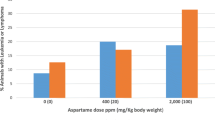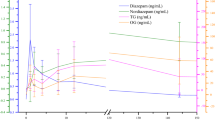Abstract
Chlorine is a toxic industrial chemical with a history of use as a chemical weapon. Chlorine is also produced, stored, and transported in bulk making it a high-priority pulmonary threat in the USA. Due to the high reactivity of chlorine, few biomarkers exist to identify exposure in clinical and environmental samples. Our laboratory evaluates acute chlorine exposure in clinical samples by measuring 3-chlorotyrosine (Cl-Tyr) and 3,5-dichlorotyrosine (Cl2-Tyr) using liquid chromatography tandem mass spectrometry (LC-MS/MS). Individuals can have elevated biomarker levels due to their environment and chronic health conditions, but levels are significantly lower in individuals exposed to chlorine. Historically these biomarkers have been evaluated in serum, plasma, blood, and bronchoalveolar lavage (BAL) fluid. We report the expansion into hair and lung tissue samples using our newly developed tissue homogenization protocol which fits seamlessly with our current chlorinated tyrosine quantitative assay. Furthermore, we have updated the chlorinated tyrosine assay to improve throughput and ruggedness and reduce sample volume requirements. The improved assay was used to measure chlorinated tyrosine levels in 198 mice exposed to either chlorine gas or air. From this animal study, we compared Cl-Tyr and Cl2-Tyr levels among three matrices (i.e., lung, hair, and blood) and found that hair had the most abundant chlorine exposure biomarkers. Furthermore, we captured the first timeline of each analyte in the lung, hair, and blood samples. In mice exposed to chlorine gas, both Cl-Tyr and Cl2-Tyr were present in blood and lung samples up to 24 h and up to 30 days in hair samples.





Similar content being viewed by others
Abbreviations
- Cl-Tyr:
-
3-chlorotyrosine
- 3,5 Cl2-Tyr:
-
3,5-dichlorotyrosine
- LC-MS/MS:
-
liquid chromatography tandem mass spectrometry
- BAL:
-
bronchoalveolar lavage
- CWC:
-
Chemical Weapons Convention
- OPCW:
-
Organisation for the Prohibition of Chemical Weapons
- HPLC:
-
high-performance liquid chromatography
- FDA:
-
U.S. Food and Drug Administration
- ISTD:
-
internal standard
- QC:
-
quality control
- QCL:
-
QC low
- QCM:
-
QC mid
- QCH:
-
QC high
- MB:
-
matrix blank
- CDC:
-
Centers for Disease Control and Prevention
- BARDA:
-
Biomedical Advanced Research and Development Authority
- UV:
-
ultraviolet
- AVMA:
-
American Veterinary Medical Association
- IACUC:
-
Institutional Animal Care and Use Committee
- MPA:
-
mobile phase A
- MPB:
-
mobile phase B
- R 2 :
-
coefficient of determination
- LOD:
-
limit of detection
- LLOQ:
-
lower limit of quantitation
References
Toxicology profile for chlorine. U.S Department of Health and Human Services. 2010. https://www.atsdr.cdc.gov/ToxProfiles/tp172.pdf. Assessed 27 May 2020.
Pamphlet 1: Chlorine basics, edition 8. The Chlorine Institute. 2014. https://bookstore.chlorineinstitute.org/pamphlet-1-chlorine-basics.html?Session_ID=616aaf0d8f2aa0b6171e3e544421f560. Assessed 18 June 2020.
Fitzgerald GJ. Chemical warfare and medical response during World War I. Am J Public Health. 2008. https://doi.org/10.2105/AJPH.2007.11930.
OPCW Fact finding mission: “compelling confirmation” that chlorine gas used as weapon in Syria. Organisation for the Prohibition of Chemical Weapons. 2014. http://www.opcw.org/news/article/opcw-fact-finding-mission-compelling-confirmation-that-chlorine-gas-used-as-weapon-in-syria. Accessed 27 May 2020.
Report of the fact-finding mission regarding the incident of alleged use of toxic chemicals as a weapon in Douma, Syrian Arab Republic, on 7 April 2018. Organisation for the Prohibition of Chemical Weapons. 2019. https://www.opcw.org/sites/default/files/documents/2019/03/s-1731-2019%28e%29.pdf. Accessed 26 May 2020.
Nowhere to hide: the logic of chemical weapons use in Syria. Global Public Policy Institute. 2019. https://www.gppi.net/media/GPPi_Schneider_Luetkefend_2019_Nowhere_to_Hide_Web.pdf. Accessed 6 August 2020.
More than 300 chemical attacks launched during Syrian civil war, study says. National Public Radio. 2019. https://www.npr.org/2019/02/17/695545252/more-than-300-chemical-attacks-launched-during-syrian-civil-war-study-says. Accessed 6 August 2020.
Convention on the prohibition of the development, production, stockpiling and use of chemical weapons and on their destruction. Organisation for the Prohibition of Chemical Weapons. 2020. https://www.opcw.org/chemical-weapons-convention. Accessed 26 May 2020.
Garlantezéc R, Multigner L, Labat L, Bonvallot N, Pulkkinen J, Dananché B, et al. Urinary biomarkers of exposure to glycol ethers and chlorinated solvents during pregnancy: determinants of exposure and comparison with indirect methods of exposure assessment. Occup Environ Med. 2012. https://doi.org/10.1136/oem.2010.062315.
National Response Center 2010-2019 Reports. United States Coast Guard. https://nrc.uscg.mil. Accessed 6 August 2020.
Faurschou M, Borregaard N. Neutrophil granules and secretory vesicles in inflammation. Microbes Infect. 2003. https://doi.org/10.1016/j.micinf.2003.09.008.
Sochaski MA, Jarabek AM, Murphy J, Andersen ME. 3-Chlorotyrosine and 3,5-dichlorotyrosine as biomarkers of respiratory tract exposure to chlorine gas. J Anal Toxicol. 2008. https://doi.org/10.1093/jat/32.1.99.
Crow BS, Quiñones-González J, Pantazides BG, Perez JW, Winkeljohn WR, Garton JW, et al. Simultaneous measurement of 3-chlorotyrosine and 3,5-dichlorotyrosine in whole blood, serum and plasma by isotope dilution HPLC-MS-MS. J Anal Toxicol. 2016. https://doi.org/10.1093/jat/bkw011.
Hemström P, Larsson A, Elfsmark L, Åstot C. l-Alpha-phosphatidylglycerol chlorohydrins as potential biomarkers for chlorine gas exposure. Anal Chem. 2016. https://doi.org/10.1021/acs.analchem.6b01896.
Ford DA, Honavar J, Albert CJ, Duerr MA, Oh JY, Doran S, et al. Formation of chlorinated lipids post-chlorine gas exposure. J Lipid Res. 2016. https://doi.org/10.1194/jlr.M069005.
Massa CB, Scott P, Abramova E, Gardner C, Laskin DL, Gow AJ. Acute chlorine gas exposure produces transient inflammation and a progressive alteration in surfactant composition with accompanying mechanical dysfunction. Toxicol Appl Pharmacol. 2014. https://doi.org/10.1016/j.taap.2014.02.006.
Bioanalytical method validation: guidance for industry. Food and Drug Administration. 2018. https://www.fda.gov/regulatory-information/search-fda-guidance-documents/bioanalytical-method-validation-guidance-industry. Assessed 26 May 2020.
Caudill SP, Schleicher RL, Pirkle JL. Multi-rule quality control for the age-related eye disease study. Stat Med. 2008. https://doi.org/10.1002/sim.3222.
Taylor JK. Quality assurance of chemical measurements: Lewis Publishers, Inc.; 1987.
Schaffer MI, Wang W, Irving J. An evaluation of two wash procedures for the differentiation of external contamination versus ingestion in the analysis of human hair samples for cocaine. J Anal Toxicol. 2002. https://doi.org/10.1093/jat/26.7.485.
Paulsen RB, Wilkins DG, Slawson MH, Shaw K, Rollins DE. Effect of four laboratory decontamination procedures on the quantitative determination of cocaine and metabolites in hair by HPLC-MS. J Anal Toxicol. 2001. https://doi.org/10.1093/jat/25.7.490.
Milner Y, Sudnik J, Filippi M, Kizoulis M, Kashgarian M, Stenn K. Exogen, shedding phase of the hair growth cycle: characterization of a mouse model. J Invest Dermatol. 2002. https://doi.org/10.1046/j.1523-1747.2002.01842.x.
Plikus MV, Chuong CM. Complex hair cycle domain patterns and regenerative hair waves in living rodents. J Invest Dematol. 2008. https://doi.org/10.1038/sj.jid.5701180.
Acknowledgments
We want to thank Tonya Tuberville and Stephanie Boles for their assistance in testing different homogenization techniques. Furthermore, we want to thank Samantha Isenberg for reviewing all the chromatography as a quality control officer and for providing insightful feedback.
Funding
This work was supported by the Centers for Disease Control and Prevention and the Center for Preparedness and Response (PID 14782). Development of a Murine Model of Pulmonary Chlorine Exposure Injury was funded by the Task Order contract HHSO100201500004I to Battelle Memorial Institute by Biomedical Advanced Research and Development Authority (BARDA).
Author information
Authors and Affiliations
Corresponding author
Ethics declarations
Conflict of interest
The authors declare that they have no conflicts of interest.
Ethics approval
All animals were maintained under the Battelle animal care and use program accredited by the Association for Assessment and Accreditation for Laboratory Animal Care International. This care and use program was in accordance with guidelines set forth in the “Guide for the Care and Use of Laboratory Animals,” National Research Council, and/or the regulations and standards promulgated by the Agricultural Research Service, United States Department of Agriculture (USDA), pursuant to the Laboratory Animal Welfare Act of August 24, 1966, as amended.
Source of biological materials
All biological materials were either purchased from vendors or gifted to the CDC as part of a collaborative effort between CDC, Battelle Memorial Institute, and BARDA aimed at the development of a murine model of pulmonary chlorine exposure injury.
Disclaimer
The findings and conclusions in this report are those of the authors and do not necessarily represent the views of the Centers for Disease Control and Prevention or the Biomedical Advanced Research and Development Authority. Use of trade names is for identification only and does not imply endorsement by the Centers for Disease Control and Prevention, the Public Health Service, or the US Department of Health and Human Services.
Additional information
Publisher’s note
Springer Nature remains neutral with regard to jurisdictional claims in published maps and institutional affiliations.
Supplementary information
Data from the analysis of all animal samples is attached in the supplemental data table.
ESM 1
(XLSX 27 kb)
Rights and permissions
About this article
Cite this article
Pantazides, B.G., Crow, B.S., Quiñones-González, J. et al. Development of a clinical assay to measure chlorinated tyrosine in hair and tissue samples using a mouse chlorine inhalation exposure model. Anal Bioanal Chem 413, 1765–1776 (2021). https://doi.org/10.1007/s00216-020-03146-x
Received:
Revised:
Accepted:
Published:
Issue Date:
DOI: https://doi.org/10.1007/s00216-020-03146-x




